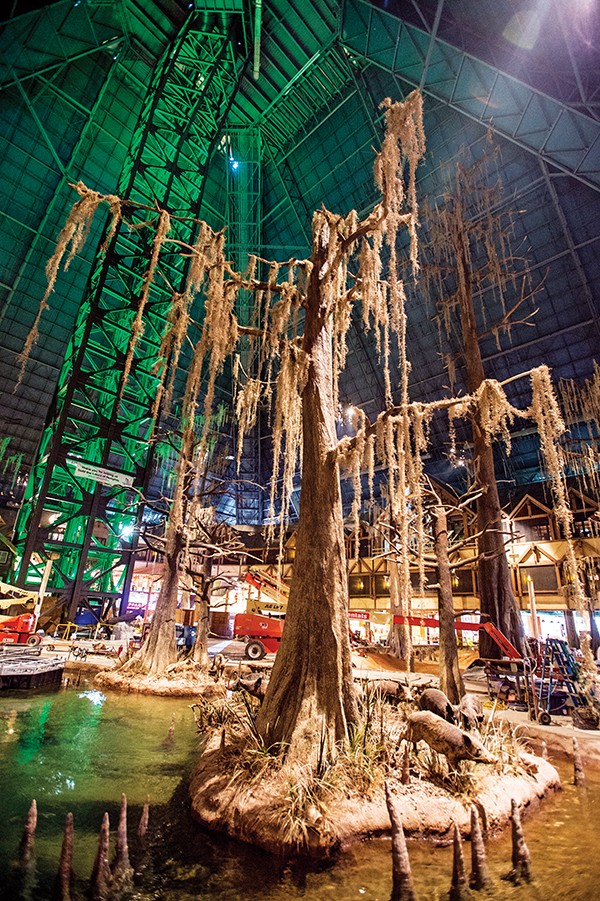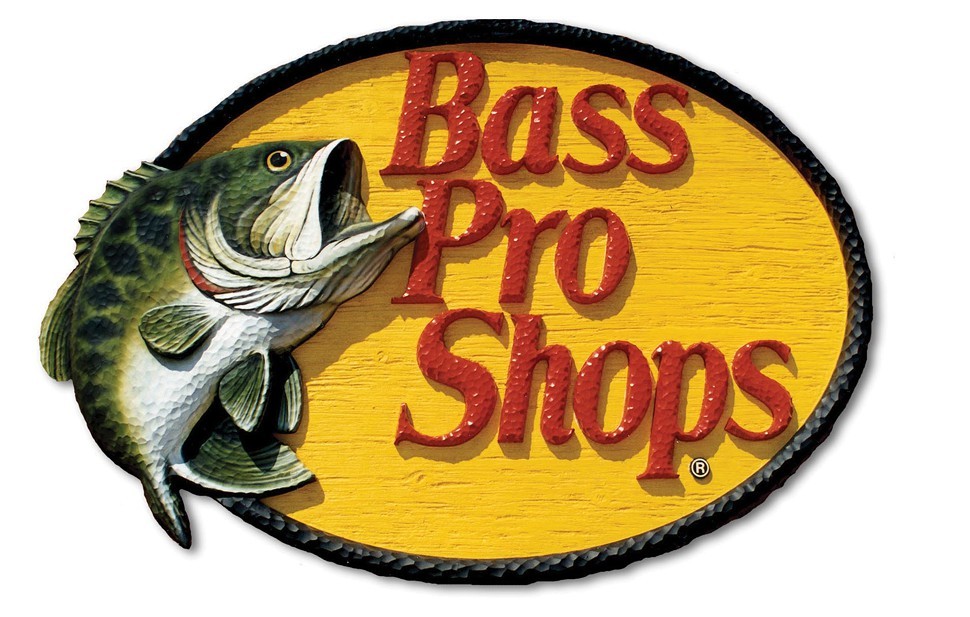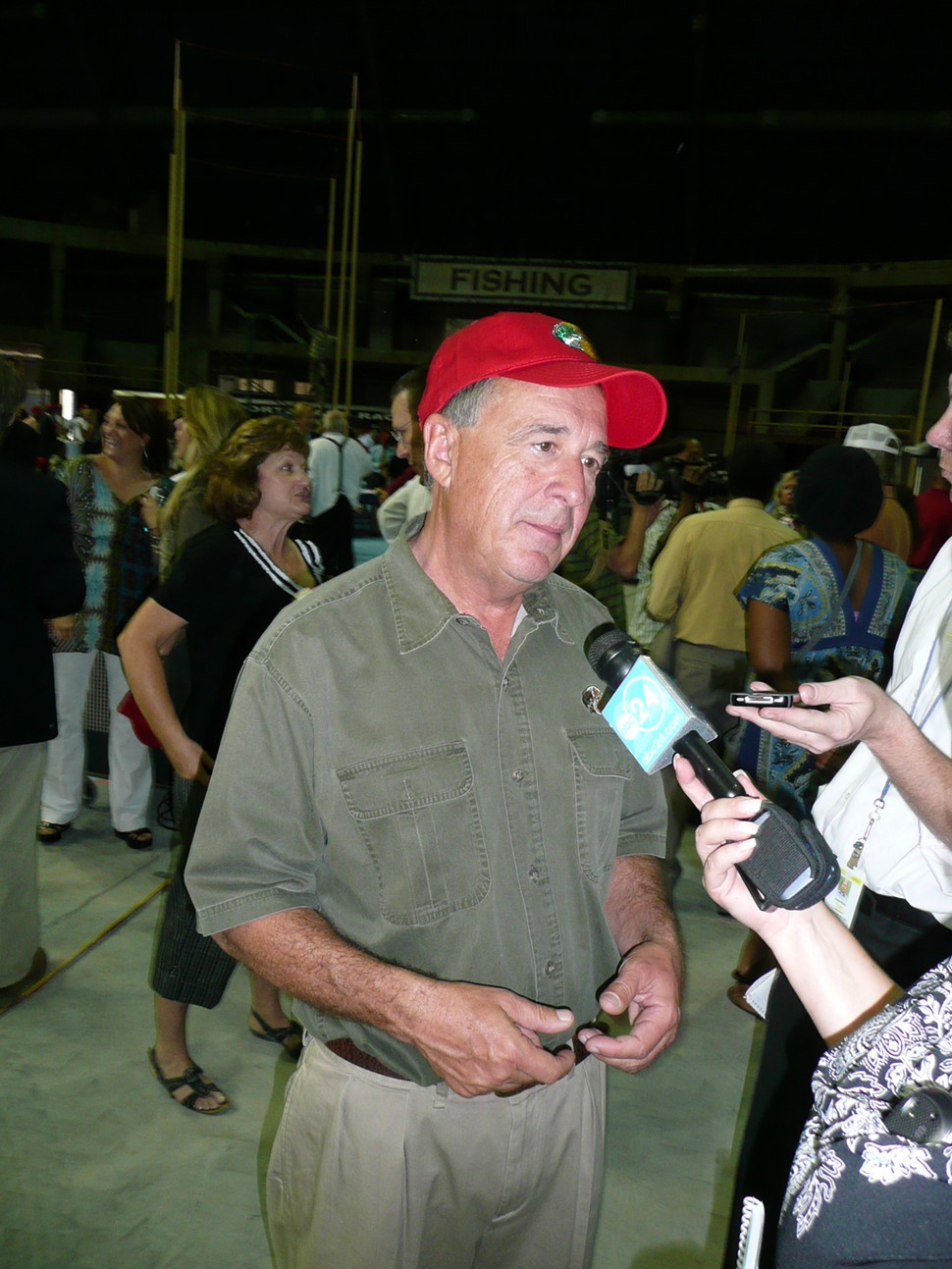Memphis Mayor A C Wharton stood at the podium and squinted into the stage lights. All eyes in the room were on him, and a bank of television cameras made sure the eyes of the entire city were on him, as well. As he delivered his State of the City speech in January, Wharton scanned the room for one man.
“Where is Robert Lipscomb?” he asked. Heads turned to locate Lipscomb, the city’s director of Housing and Community Development and the Pyramid point man for nearly a decade. “The Pyramid will open on May 1st, Robert Lipscomb … or else.”
The line drew a big laugh – laughter of collective exasperation. By the time Wharton gave his speech in January, the Pyramid was supposed to have been open for more than a month. The opening was delayed. And it wasn’t the first delay.
“I have visitors‘ guides going back to 2006 saying, coming next year: Bass Pro at the Pyramid!” said Kevin Kane, president of the Memphis Convention and Visitors Bureau. “Here we are in 2015, and it’s here and I think it’s going to be worth the wait.”
This time next week — April 29th at 6 p.m. — Bass Pro Shops at the Pyramid will be open to the public. If it’s not, maybe Lipscomb should steer clear of Wharton until the heat dies down. There will be a grand opening ceremony that promises a festival atmosphere and some big-name outdoor celebrities.
No one has to tell Memphians that getting to the grand opening has been a long and sometimes tense journey. But the difficulties of the trip have been matched — outweighed even, some would say — by the excitement of activating the skyline’s most famous building and the millions of dollars and visitors it promises to bring.
“This will be a national destination,” said David Hagel, Bass Pro Shops at the Pyramid store manager. “We’re going to bring in people from all across the country. We’re going to show them what Memphis has to offer.”
But the Bass Pro journey doesn’t stop at the ribbon cutting. Growing pains are certain as the company irons itself into the fabric of Memphis and as Memphians learn to love the new attention (and traffic) Bass Pro will bring downtown. As for tangibles, many say one large item remains on the project’s punch list: a pedestrian bridge connecting Bass Pro to the Pinch District.

A painter at work inside Uncle Buck’s
What to expect
Nothing you’ve seen in the news or social media can prepare you for your first visit to Bass Pro Shops at the Pyramid. The project has always been billed as a shopping destination and built to provide a one-of-a-kind experience. Bass Pro has certainly done that. What other store, hotel, restaurant, bar, or bowling alley has an alligator pit?

Bowling alley ball return
Visitors to the shiny Pyramid will be greeted with antler-handled wooden doors. Inside, it’s a Bass Pro Shop with rough-hewn wood and antique fishing gear for the brand’s signature hunting lodge aesthetic. Of course, it’s also a store with cash registers, shopping carts, and signs pointing you to boats, boots, or rain coats. But pass through a hallway and the vast inner chamber of the place swallows you whole, separates you from the streets of Memphis, and puts you into a gigantic cypress swamp.

Faux cypress trees
Your eyes lift to the Pyramid’s apex, past the massive trunks of faux cypress trees and their spindly boughs draped in Spanish moss. Ducks glide overhead. Wild boar — dirty with swamp mud — hunt together at the base of a tree. Water gurgles below your feet. You look over the railing at fish swimming in the gently moving water. Wide-eyed deer watch from forested hideouts. A standing bear watches the deer.

Duck decor overhead
Then there’s the massive free-standing elevator shaft in the center. The darkened structure (the largest of its kind in the country) glowed emerald green on a recent visit. In it, a glass box carried tiny, hard-hatted figures through a ceiling just below the Pyramid’s apex and disappeared. As of this writing, media have not yet been allowed to ride to the top for the apex view of Memphis, the Mississippi River, and Arkansas; “like nobody’s ever seen before,” Kane said. The Pyramid’s apex, now called The Lookout, is the home of the Sky High Catfish Cabin, a restaurant and bar with a massive aquarium, all of it 300 feet above the Mississippi River.
But getting to The Lookout will cost $10; kids can ride for $5 until 4 p.m. Visitors can purchase an annual membership for $100. Big Cypress Lodge hotel guests ride for free.
No merchandise has been seen on the Bass Pro sales floor during media tours so far. But store officials say the store will have the largest assortment of water fowling gear ever assembled in a Bass Pro store (a nod to the river and the Mississippi Flyway), a Beretta gun center, a center for engraving and customizing duck calls, and sporting gear from cookware to footwear for nearly all outdoor activities. On hold, for now, is a boat dock on the Wolf River Harbor that was once a part of the project’s plans. The company “has a vision to make this happen in the future but exact details and timing are not confirmed at this time.”

Statue outside Uncle Buck’s
Inside, too, is Uncle Buck’s Fish Bowl & Grill. It’s one of nine restaurants in the Bass Pro “family” of restaurants and one of three Uncle Buck’s concepts. The main draw of Uncle Buck’s Fish Bowl and Grill is the 13-lane bowling alley. Fish swim along the ceiling of the huge room, painted blue and green and with huge undersea murals, so bowlers feel like they’re underwater. If you need more convincing, just wait until you retrieve your ball from the mouth of a giant catfish. The restaurant offers pub fare — nachos, burgers, pizza — but also fish dishes from grilled salmon to catfish fingers.
And there’s now a hotel inside the Pyramid. Big Cypress Lodge offers 82 rooms, two cabins, and 15 suites along the Pyramid’s second and third floors. Some rooms look like tree houses, some like duck hunting camps, but most have fireplaces (electric) and screened-in porches. The nearly 2,000 square-foot Governor’s Suite can accommodate eight people and has a private balcony, kitchen, dining room, vaulted ceilings, and a boardroom. The hotel also has a fitness center, spa, and event space for up to 225 people.
Traffic
But what about getting there?
Bass Pro hired engineers to gauge traffic coming into and out of the Pyramid site. John Cameron, the city’s engineer, said the company did not share those results with his office, but Bass Pro told him they felt “comfortable” with traffic access to the site.
The projected one million annual visitors will likely use the Riverside Drive exit from I-40 from the east and west or drive straight onto Riverside from I-55 from the south, Cameron said. However, Bass Pro’s end-of-April opening directly coincides with Memphis In May, when the festival closes a stretch of Riverside for a month, which has the potential to snarl Bass Pro traffic coming from the south. But Cameron said he believes the company will direct those visitors to Midtown I-240, to I-40, and then to the Riverside exit.
Paul Morris, president of the Downtown Memphis Commission, said traffic may be bad in the month following the grand opening but should not pose big problems after that.
“The Pyramid was built to be an arena that attracted about 18,000 people,” Morris said. “It was built so that 18,000 people would come at the same time and leave at the same time. There were certainly some traffic issues at the time, but I don’t remember a complete dysfunction with the traffic at all.”
The Bass and the Channel Cat
To hear Bass Pro founder Johnny Morris tell it, the whole thing started with a Mississippi River channel catfish – a damn big one.
“I remember trying to make up my mind about putting our store in the Pyramid,” Morris said at a construction kick-off event in 2012. “I was on the Mississippi River fishing with my buddies Bill Dance and Jack Emmitt, and I said if we catch a big catfish, it’s meant to be — it’s an omen. Sure enough, with about one hour to go, Jack got a bite and caught this catfish in the shadow of the Pyramid and I said it’s a deal — we’re gonna do it!”
It’s a funny story that’s been told many times over the years. But don’t be fooled by a fish tale. Morris is a masterful businessman. Forbes puts his net worth at $4.2 billion. As billionaires go, he’s ranked the 405th wealthiest person in America, ranked just south of Dallas Cowboys owner Jerry Jones and just north of Donald Trump.
Morris grew the Bass Pro Shop business from a corner of his dad’s liquor store in Springfield, Missouri, in 1971. Bass Pro now has about 90 locations in the U.S. and Canada. Revenues grew 5 percent last year to $4.2 billion, according to Forbes, and the company employs about 19,000.
Dollars and Cents
Hagel wouldn’t say how much money the company has pumped into the Pyramid, claiming the non-disclosure prerogative of a private company. But he said, “We have spent more money on this project than we’ve ever spent outside of Springfield,” which has a large store and the Big Cedar Lodge resort on Table Rock Lake. Bond documents for the Pyramid project from 2011 said “private sector construction investment in the Pyramid” was projected at $81.5 million.
In 2011, Memphis issued $197 million in bonds (basically, loans for cities) for the project. The city will pay that money back over the next 20 years, with taxes collected from sales in the Tourist Development Zone in and around the Pyramid. Those 2011 bond documents project total sales taxes at the Pyramid alone to be $8.3 million.
For that $197 million, taxpayers have paid for soil testing, seismic ground improvements, demolition, excavation, parking lots, paving, landscaping, and pretty much everything happening outside of the Pyramid. As Hagel put it, Memphis “spent that money to get us — the renters — inside this building.”
For its investment, the city will get a rent payment of at least $880,000 in the first year and $1 million in the years after. Or, the city will get 2 percent of Bass Pro sales every year — whichever figure is larger.
Hagel wouldn’t give sales projections, again, claiming that the private company didn’t have to disclose the figures. Kane said the company projects $2 million in sales each week. Bond documents in 2011 projected 2014 sales (which was slated to be Bass Pro’s first full year open) at $107.2 million.
Will it all work? Lipscomb thinks it will. Risk comes standard in business. And risk is a central tenet of Lipscomb’s strategic ethos.
“Cities take risks,” Lipscomb said last week, referencing a deal unrelated to Bass Pro. “We take risks to make deals work. That’s what cities do.”
But maybe they shouldn’t. Chuck Marohn is an engineer, city planner, and president of Strong Towns, a nonprofit organization whose mission statement says “enduring prosperity for our communities cannot be artificially created from the outside but must be built from within, incrementally over time.”
Marohn said the organization has a very small data set for projects as big as Bass Pro at the Pyramid and an even smaller data set for projects that big that are successful. These big projects are “shortcuts to success,” he said.
“We do this everywhere; this is America today,” Marohn said. “It’s much harder to fix sidewalks and put in crosswalks and maintain parks and do those hard things. It’s a lot easier for public officials to throw hundreds of millions of dollars at a big project in hopes that it will be transformative.”

The Pyramid from Overton Avenue
Can’t Pinch Us Anymore
Two weeks ago, music thumped over chatty conversations up and down Main Street as hundreds streamed through the MEMFix event in the Pinch District.
Inside the Red Fish Gallery, owner Linda Thomas held up a bottle and asked her customers loudly, “Who wants white wine?
Thomas and her husband bought the two-story building in 2004. Back then, the Pinch was “pretty dead, because the Tomb of Doom had already moved on.” But the couple found friends in the neighborhood at Westy’s and the now-closed T.J. Mulligans. She opened Red Fish Gallery three years ago and said the Pinch has changed, “but not anything like it’s about to change.”
“A lot of people say [Bass Pro visitors] are going to get back in their cars and head right back to Arkansas or wherever they came from. But I say that’s not so,” Thomas said. “I see people getting on the trolley bus and touring downtown, and I think this place is going to become a vibrant part of the city again. I’m not ready to give up on the Pinch. I’m going to be here until they can’t pinch us anymore.”
Thomas said she hasn’t given up on the pedestrian bridge, either. The original Bass Pro plans called for a pedestrian bridge from the Pyramid’s east side that would stretch over Front Street and land on Overton Avenue. Bass Pro had to shuffle things when it added 60 more rooms to the Big Cypress Lodge and the pedestrian bridge was taken off the table, at least for now.
City laws say designs of public projects must be approved through the Design Review Board. That pedestrian bridge was approved as a part of the overall project and, according to the letter of the law, must be built. Morris said the potential benefit Bass Pro will bring downtown far outweighs his disappointment about the bridge. But “a ton of public money” is being spent on the project and one of the strings attached to that money is that projects have to be built the way they are approved.
Bass Pro said they won’t build it and, so far, there’s no firm commitment by city leaders on when or even where it we be built.
“I think it is disrespectful to the Design Review Board and, thereby, the public, because that‘s who the Design Review Board represents,” Morris said. “I think it’s disrespectful to the Pinch.”
Lipscomb said the bridge is “still on our radar screen” but he’s focused on getting Bass Pro finally opened.
“It’s not as simple as saying the pedestrian bridge is gone,” Lipscomb said last week. “We’ve doubled the [number] of rooms and now you’ve got to re-think the whole thing. How can you have access from the Pinch to the Pyramid? That requires new thinking.”
Lipscomb said until a bridge is built, the best access to Bass Pro from the Pinch is at the store’s north entrance at the corner of A.W. Willis and Front.
The Big Show
Wednesday‘s big grand opening event will feature Turtleman, Tony Stewart, Bill Dance, Hugh Freeze, and Miss Tennessee USA. Grand opening events continue through the weekend, with promotions, more celebrities, and music. The store will operate from 8 a.m. to midnight, Monday through Saturday. Sunday hours are 8 a.m. to 11 p.m.
Editor’s Note: After this story published, Bass Pro Shops officials sent the following clarification regarding the pedestrian bridge that would connect the Pyramid site with The Pinch district:
“It’s our understanding that a pedestrian bridge will be built. The city of Memphis is currently evaluating details on the best way to link the Pyramid with the Pinch based on their economic redevelopment plans. When they are ready to move forward we will partner with them to help make it happen.”










